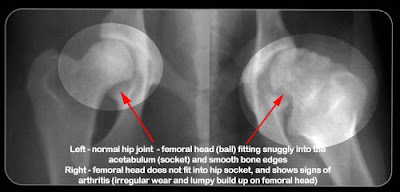Taking your animals with you in an evacuation requires some forethought and planning. Don’t wait until it’s too late.
Each year we see disasters in various forms all across the country. Tornadoes, floods, fires, hurricanes, blizzards and more can disrupt our lives and our families. In many families, that includes our animals.
When you consider gas leaks or toxic spills and acts of terrorism you realize anyone can be affected by a disaster. You could be told to leave your home for a short time, only to find the situation keeps you away from your home for weeks. If you do not take your animals with you, an evacuation of your family could mean another disaster back at home with your pets.
Because events occur quickly and decisions are made fast, you need to have a plan for yourself and your animals in case of a disaster.
First, acquaint yourself with the types of disasters that can affect your area. Then develop an evacuation plan for your animals. For pets this may mean putting the small animals in a carrier and into the car for immediate evacuation. For farm animals, you would need to have an appropriate trailer handy and know where you can take each animal to be away from the danger and where they can receive proper care. This takes some thought and planning.
In case you are not at home at the time of a disaster, place stickers on the front and back of your home or barn to notify neighbors or emergency personnel that animals are on your property and where they can find your evacuation supplies. Include a list of the number, type and location of all your animals. Have leashes, carriers and halters near by and easy to find.
If you have a friend or neighbor that you trust and is willing to help, let them know where they can find a key to your property and pre-arrange with them to take care of your animals in case you cannot get back home for some time. This is another reason to have supplies ready and easy to find.
Be sure all your animals have proper identification. Rabies and ID tags are the best form for small animals. Microchipping is becoming a popular form of animal identification. An ID tag on a halter works well for large animals.
An animal carrier and an evacuation kit are the two most important things to have ready in advance. Have your evacuation kit near the carrier or cage and keep the items in it fresh. This allows for fast action. For an evacuation all you would need to do is put your pets in the carrier and grab the kit. An old overnight bag or back pack works well.
Some of the items to keep in your animal’s evacuation bag:
• Food
• Bottle of water
• Gloves and muzzles
• Paper towels
• First aid kit
• Veterinary records
• Veterinary records
• List of contact phone numbers including your cell and prearranged evacuation spot, your veterinarian, local humane society, and friends.
• Towels for clean up or bedding
• Trash bags
• A letter signed by you giving others the authority to treat your pets in your absence.
When an evacuation order is issued, what are the steps you should take?
• Bring all pets inside
• Make sure they all have ID tags on
• Get all pets into their carriers
• Grab your evacuation kits
• Get everyone into the car
• Leave as soon as possible with your pets in the car
• Along the way, call your pre-arranged evacuation site.
• Let friends know where you are going
When you return, what should you do?
• Look around both inside and out for dangerous objects, animals or chemicals.
• Let your pets have access to the indoor areas only until you can evaluate the outside areas for safety.
• Don’t let animal engorge themselves with food or water when you get back. Return to a normal routine slowly.
• Let your pets rest and sleep
• If your pets are lost, call shelters daily and visit lost pet web sites often.
If there has been any injury or exposure to questionable substances, call your veterinarian for a health exam.
As we have seen in several wide spread disasters, many people will not evacuate without their pets. Leaving your home with your family and pets in an emergency is smart, but takes pre-planning and thought.
Plan now and be able to act fast when minutes count. Your veterinarian can help you with this planning or visit www.VetNewsNet.com for video information.












